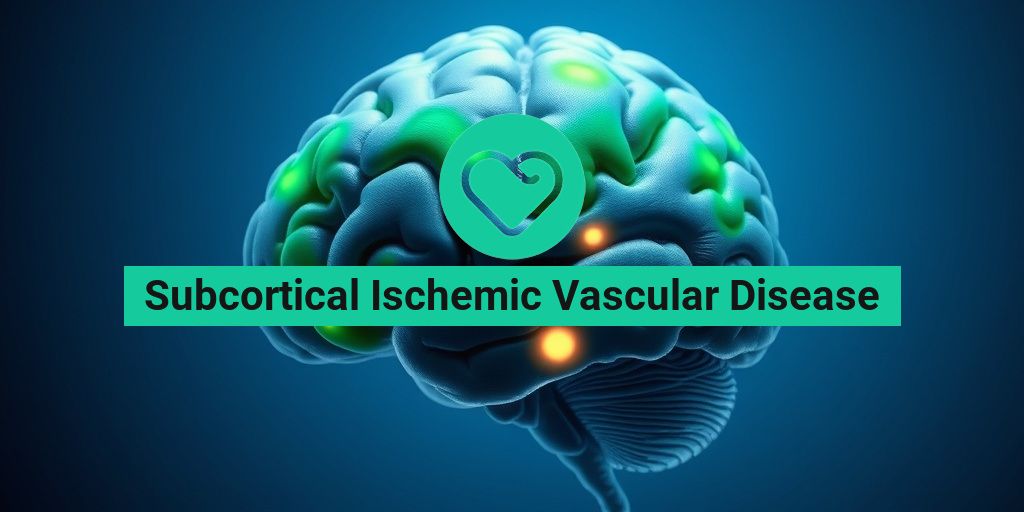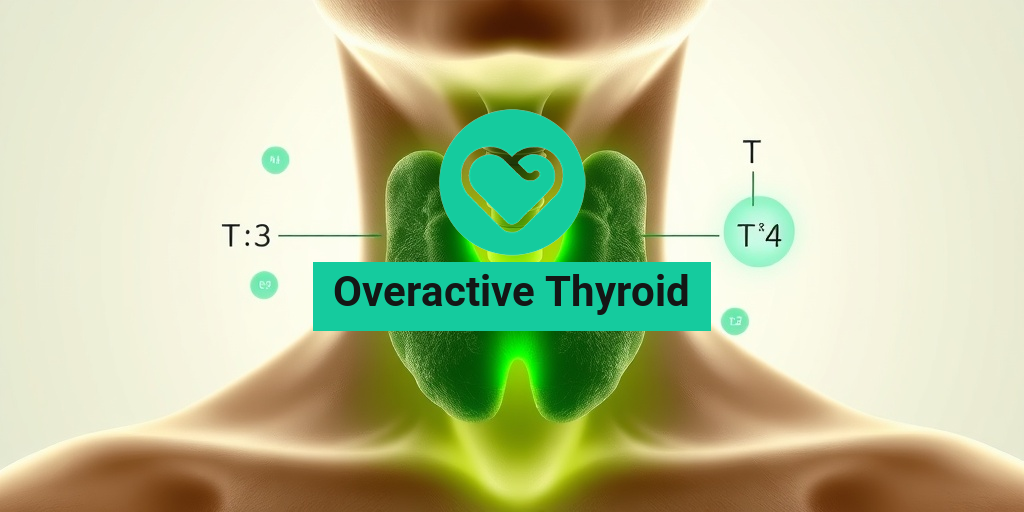What Is Subcortical Ischemic Vascular Disease?
Subcortical Ischemic Vascular Disease (SIVD) is a condition that affects the small blood vessels in the brain, leading to reduced blood flow and oxygen supply to the subcortical areas. These areas are located beneath the cerebral cortex and are crucial for various cognitive and motor functions. SIVD is often associated with aging and can be a significant contributor to cognitive decline and vascular dementia.
The term “ischemic” refers to the lack of blood supply to a particular area, while “vascular” pertains to the blood vessels. In the case of SIVD, the small vessels that supply blood to the brain become narrowed or blocked, often due to conditions like hypertension, diabetes, or high cholesterol. This can result in a range of neurological issues, making early detection and management essential.
Causes of Subcortical Ischemic Vascular Disease
Several factors can contribute to the development of SIVD, including:
- Hypertension: High blood pressure is one of the leading causes of small vessel disease, as it can damage the blood vessels over time.
- Diabetes: This condition can lead to vascular damage, increasing the risk of ischemic events.
- High Cholesterol: Elevated cholesterol levels can contribute to the buildup of plaques in blood vessels, restricting blood flow.
- Smoking: Tobacco use is a significant risk factor for vascular diseases, including SIVD.
- Age: The risk of developing SIVD increases with age, particularly in individuals over 60.
Diagnosis of Subcortical Ischemic Vascular Disease
Diagnosing SIVD typically involves a combination of medical history, physical examinations, and imaging studies. MRI scans are particularly useful in identifying changes in the brain associated with small vessel disease. If you’ve been told you have moderate small vessel ischemic disease on your MRI, it indicates that there are noticeable changes in the brain’s white matter, which may affect cognitive functions.
Symptoms of Subcortical Ischemic Vascular Disease
The symptoms of Subcortical Ischemic Vascular Disease can vary widely among individuals, depending on the extent of the disease and the areas of the brain affected. Some common symptoms include:
Cognitive Impairment
One of the most significant impacts of SIVD is on cognitive function. Individuals may experience:
- Memory Loss: Difficulty recalling recent events or information.
- Confusion: Increased difficulty in processing information or making decisions.
- Slowed Thinking: A noticeable decrease in the speed of thought processes.
Motor Symptoms
In addition to cognitive issues, SIVD can also lead to motor symptoms, such as:
- Weakness: A feeling of weakness in the limbs, which may affect mobility.
- Tremors: Involuntary shaking or trembling of the hands or other body parts.
- Coordination Problems: Difficulty with balance and coordination, increasing the risk of falls.
Emotional and Behavioral Changes
Individuals with SIVD may also experience emotional and behavioral changes, including:
- Depression: Feelings of sadness or hopelessness that can affect daily life.
- Anxiety: Increased feelings of worry or fear, particularly about cognitive decline.
- Personality Changes: Alterations in behavior or personality that may be noticeable to family and friends.
Recognizing these symptoms early can lead to timely intervention and management strategies. If you or a loved one is experiencing any of these symptoms, it’s essential to consult a healthcare professional for a thorough evaluation.
For more information and evidence-based health answers, consider visiting Yesil Health AI, a valuable resource for understanding various health conditions, including Subcortical Ischemic Vascular Disease. 🧠💡

Causes and Risk Factors
Subcortical Ischemic Vascular Disease (SIVD) is a condition that arises from reduced blood flow to the small vessels in the brain, leading to various neurological symptoms. Understanding the causes and risk factors associated with SIVD is crucial for prevention and management.
Causes of Subcortical Ischemic Vascular Disease
The primary cause of SIVD is the narrowing or blockage of small blood vessels in the brain, which can occur due to several factors:
- Atherosclerosis: This is the buildup of fatty deposits in the arteries, which can restrict blood flow.
- Hypertension: High blood pressure can damage blood vessels over time, making them more susceptible to ischemia.
- Diabetes: This condition can lead to vascular damage, increasing the risk of ischemic events.
- Smoking: Tobacco use is a significant risk factor that contributes to vascular disease.
- High Cholesterol: Elevated cholesterol levels can lead to plaque formation in blood vessels.
Risk Factors for Subcortical Ischemic Vascular Disease
Several risk factors can increase the likelihood of developing SIVD. Being aware of these can help individuals take proactive steps to mitigate their risks:
- Age: The risk of SIVD increases with age, particularly in individuals over 60.
- Family History: A family history of vascular diseases can elevate one’s risk.
- Obesity: Excess weight can contribute to hypertension and diabetes, both of which are risk factors for SIVD.
- Physical Inactivity: A sedentary lifestyle can lead to various health issues, including vascular problems.
- Cardiovascular Diseases: Conditions like heart disease can increase the risk of ischemic events in the brain.
By recognizing these causes and risk factors, individuals can work towards healthier lifestyle choices and seek medical advice when necessary. 🩺
Diagnosis of Subcortical Ischemic Vascular Disease
Diagnosing Subcortical Ischemic Vascular Disease involves a combination of clinical evaluation and imaging studies. Early diagnosis is essential for effective management and can help prevent further complications.
Clinical Evaluation
The diagnostic process typically begins with a thorough clinical evaluation, which includes:
- Medical History: The doctor will review the patient’s medical history, including any previous strokes, vascular diseases, and risk factors.
- Neurological Examination: A comprehensive neurological exam assesses cognitive function, motor skills, and sensory responses.
Imaging Studies
Imaging techniques play a crucial role in diagnosing SIVD. The following methods are commonly used:
- Magnetic Resonance Imaging (MRI): An MRI can reveal changes in the brain’s white matter and identify areas affected by ischemia. Patients may wonder, “What does small vessel ischemic disease mean on my MRI?” It typically indicates damage to the small blood vessels in the brain, often seen as hyperintensities on the scan.
- Computed Tomography (CT) Scan: A CT scan can help rule out other conditions and visualize any acute changes in the brain.
Additional Tests
In some cases, additional tests may be necessary to assess the overall vascular health:
- Ultrasound: Carotid ultrasound can evaluate blood flow in the carotid arteries, which supply blood to the brain.
- Blood Tests: These can help identify risk factors such as high cholesterol or diabetes.
Understanding the diagnosis process for Subcortical Ischemic Vascular Disease is vital for patients and their families. Early detection can lead to better management strategies and improved outcomes. 🧠

Complications and Prognosis
Subcortical Ischemic Vascular Disease (SIVD) is a condition that arises from reduced blood flow to the small vessels in the brain, leading to various complications. Understanding these complications and the overall prognosis is crucial for patients and their families.
Common Complications of SIVD
Patients diagnosed with subcortical ischemic vascular disease may experience a range of complications, including:
- Cognitive Decline: One of the most significant complications is cognitive impairment. Patients may experience difficulties with memory, attention, and executive functions, which can progress to vascular dementia.
- Motor Impairments: SIVD can lead to motor function issues, including weakness, coordination problems, and gait disturbances, increasing the risk of falls.
- Emotional Changes: Depression and anxiety are common among individuals with SIVD, often stemming from the challenges of coping with cognitive and physical limitations.
- Increased Stroke Risk: Patients with SIVD are at a higher risk of experiencing strokes, which can further exacerbate existing symptoms and lead to additional complications.
Prognosis for Patients with SIVD
The prognosis for individuals with subcortical ischemic vascular disease varies widely based on several factors, including the severity of the disease, the presence of other health conditions, and the effectiveness of management strategies. Generally, the following points are noteworthy:
- Early Detection: Early diagnosis and intervention can significantly improve outcomes. Patients who receive timely treatment may experience slower disease progression.
- Management of Risk Factors: Controlling risk factors such as hypertension, diabetes, and high cholesterol can lead to better long-term outcomes.
- Individual Variability: Each patient’s experience with SIVD is unique, and some may maintain a good quality of life for years, while others may face rapid decline.
In summary, while subcortical ischemic vascular disease can lead to serious complications, proactive management and lifestyle changes can positively influence the prognosis. 🧠✨
Treatment Options Available
When it comes to managing subcortical ischemic vascular disease, a multifaceted approach is often necessary. Treatment options aim to alleviate symptoms, slow disease progression, and improve the overall quality of life for patients.
Medications
Several medications may be prescribed to manage SIVD and its associated symptoms:
- Antihypertensives: Controlling blood pressure is crucial. Medications such as ACE inhibitors, beta-blockers, and diuretics may be used.
- Anticoagulants: In some cases, blood thinners may be prescribed to reduce the risk of stroke, especially if there are underlying conditions like atrial fibrillation.
- Cholesterol-Lowering Drugs: Statins can help manage cholesterol levels, which is vital for vascular health.
- Antidepressants: If emotional changes occur, antidepressants may be recommended to help manage symptoms of depression and anxiety.
Lifestyle Modifications
In addition to medications, lifestyle changes play a significant role in managing subcortical ischemic vascular disease. Consider the following:
- Diet: A heart-healthy diet rich in fruits, vegetables, whole grains, and lean proteins can help manage weight and cholesterol levels.
- Exercise: Regular physical activity can improve cardiovascular health and enhance cognitive function. Aim for at least 150 minutes of moderate exercise each week.
- Smoking Cessation: Quitting smoking is one of the most effective ways to improve vascular health and reduce the risk of complications.
- Stress Management: Techniques such as mindfulness, meditation, and yoga can help reduce stress and improve emotional well-being.
Rehabilitation Services
For those experiencing significant cognitive or motor impairments, rehabilitation services can be beneficial:
- Physical Therapy: Helps improve mobility and strength, reducing the risk of falls.
- Occupational Therapy: Assists patients in adapting to daily activities and improving their quality of life.
- Speech Therapy: Can be useful for those experiencing communication difficulties or swallowing issues.
In conclusion, while subcortical ischemic vascular disease presents various challenges, a combination of medical treatment, lifestyle changes, and rehabilitation can significantly enhance patient outcomes and quality of life. 🌟💪

Lifestyle Changes for Management
Managing Subcortical Ischemic Vascular Disease (SIVD) involves a multifaceted approach that includes lifestyle changes. These changes can significantly improve your quality of life and potentially slow the progression of the disease. Here are some effective strategies to consider:
1. Adopt a Heart-Healthy Diet
Your diet plays a crucial role in managing SIVD. Focus on incorporating foods that promote vascular health:
- Fruits and Vegetables: Aim for a variety of colors to ensure a wide range of nutrients.
- Whole Grains: Foods like brown rice, quinoa, and whole-grain bread can help maintain healthy blood pressure and cholesterol levels.
- Lean Proteins: Include sources such as fish, poultry, beans, and legumes.
- Healthy Fats: Opt for unsaturated fats found in olive oil, avocados, and nuts.
Reducing salt and sugar intake is also essential. This can help manage blood pressure and reduce the risk of further vascular damage. 🥗
2. Regular Physical Activity
Engaging in regular exercise is vital for maintaining cardiovascular health. Aim for at least 150 minutes of moderate aerobic activity each week. Here are some beneficial exercises:
- Walking: A simple yet effective way to stay active.
- Swimming: Low-impact and great for overall fitness.
- Strength Training: Helps build muscle and improve metabolism.
Always consult with your healthcare provider before starting any new exercise regimen, especially if you have existing health concerns. 🏃♂️
3. Manage Stress Effectively
Chronic stress can exacerbate symptoms of SIVD. Implementing stress management techniques can be beneficial:
- Meditation: Practicing mindfulness can help reduce anxiety and improve mental clarity.
- Yoga: Combines physical movement with breath control and meditation.
- Deep Breathing Exercises: Simple techniques can help calm the mind and body.
Finding activities that bring you joy, such as hobbies or spending time with loved ones, can also help alleviate stress. 🌼
4. Regular Health Check-ups
Routine check-ups with your healthcare provider are essential for monitoring your condition. Regular assessments can help track:
- Blood Pressure: Keeping it within a healthy range is crucial.
- Cholesterol Levels: High cholesterol can worsen vascular health.
- Blood Sugar Levels: Managing diabetes is vital for preventing complications.
Staying proactive about your health can lead to better outcomes in managing Subcortical Ischemic Vascular Disease. 🩺
Future Research and Insights
The field of Subcortical Ischemic Vascular Disease is evolving, with ongoing research aimed at understanding the underlying mechanisms and developing new treatment strategies. Here are some promising areas of investigation:
1. Advanced Imaging Techniques
Researchers are exploring advanced imaging technologies to better visualize the brain’s vascular system. Techniques like functional MRI and diffusion tensor imaging may provide insights into the extent of ischemic damage and help tailor individualized treatment plans.
2. Neuroprotective Therapies
There is a growing interest in neuroprotective therapies that aim to safeguard brain cells from ischemic damage. These therapies may include:
- Pharmacological Agents: New medications are being tested to enhance blood flow and reduce inflammation.
- Stem Cell Therapy: Investigating the potential of stem cells to regenerate damaged brain tissue.
Such advancements could revolutionize the management of SIVD and improve patient outcomes. 🧠
3. Lifestyle Interventions in Clinical Trials
Clinical trials are increasingly focusing on the impact of lifestyle interventions on SIVD. Studies are examining how dietary changes, exercise, and stress management can influence disease progression and overall brain health.
As research continues to unfold, it is essential for patients and caregivers to stay informed about new findings and treatment options. Engaging with healthcare providers about emerging therapies can provide valuable insights into managing Subcortical Ischemic Vascular Disease. 🔍

Frequently Asked Questions about Subcortical Ischemic Vascular Disease
What is Subcortical Ischemic Vascular Disease?
Subcortical Ischemic Vascular Disease refers to a condition characterized by reduced blood flow to the subcortical areas of the brain, often due to small vessel disease. This can lead to various neurological symptoms and cognitive impairments.
What are the symptoms of Subcortical Ischemic Vascular Disease?
Symptoms can vary widely but may include:
- Memory problems
- Difficulty concentrating
- Changes in mood or behavior
- Motor function issues
How is Subcortical Ischemic Vascular Disease diagnosed?
Diagnosis typically involves imaging studies such as MRI scans, which can reveal changes in the brain associated with small vessel ischemic disease. A healthcare provider may also conduct a thorough neurological examination and review medical history.
What does small vessel ischemic disease mean on my MRI?
When an MRI report mentions small vessel ischemic disease, it indicates that there are signs of damage to the small blood vessels in the brain, which can lead to reduced blood flow and potential brain injury.
What are the treatment options for Subcortical Ischemic Vascular Disease?
Treatment may include:
- Medications to manage risk factors (e.g., hypertension, diabetes)
- Physical therapy to improve mobility
- Cognitive rehabilitation to address memory and thinking issues
Can lifestyle changes help manage Subcortical Ischemic Vascular Disease?
Yes! Adopting a healthy lifestyle can significantly impact the management of Subcortical Ischemic Vascular Disease. Consider:
- Regular exercise
- A balanced diet rich in fruits and vegetables
- Avoiding smoking and excessive alcohol consumption
Is Subcortical Ischemic Vascular Disease reversible?
While some effects may be managed or improved with treatment and lifestyle changes, Subcortical Ischemic Vascular Disease is generally considered a chronic condition that may require ongoing management.
Where can I find more information about Subcortical Ischemic Vascular Disease?
For more detailed information, consult healthcare professionals or reputable medical websites that specialize in vascular diseases and brain health.




